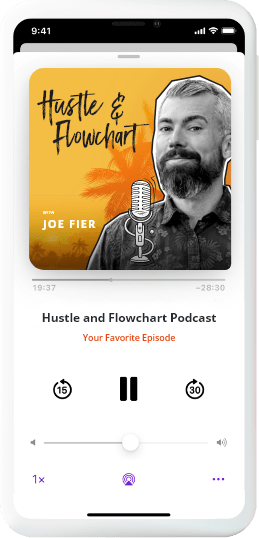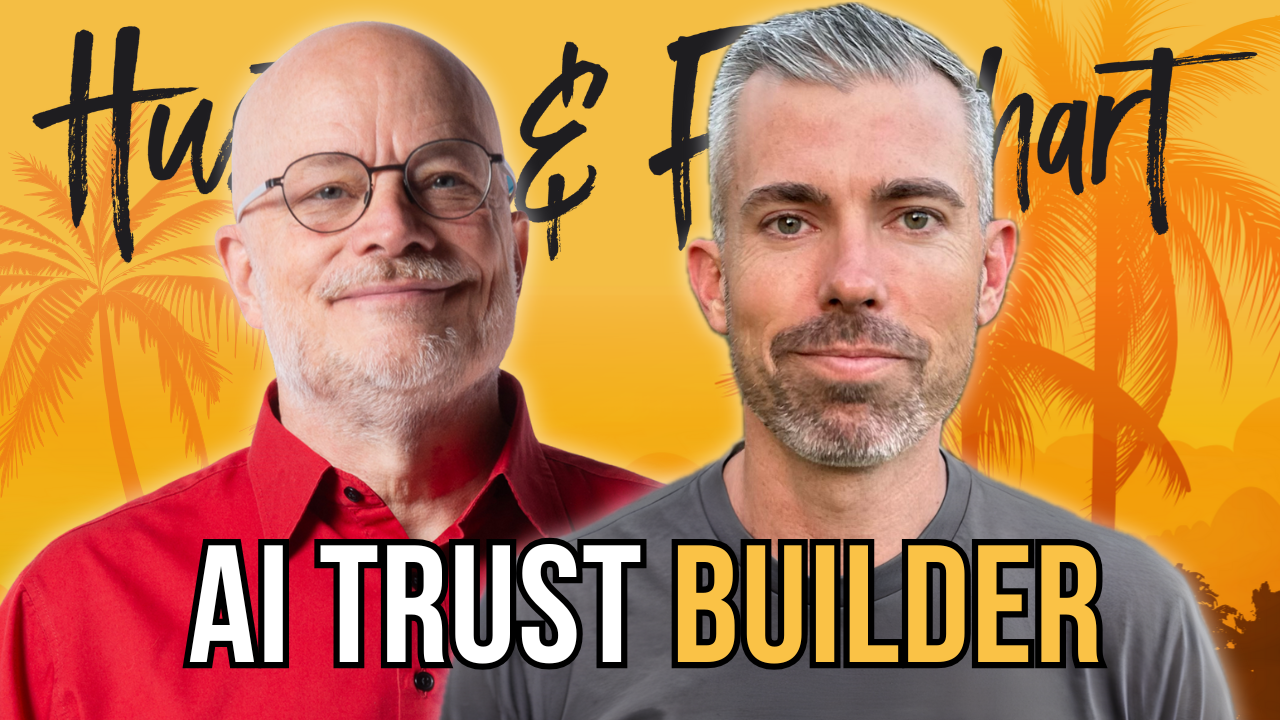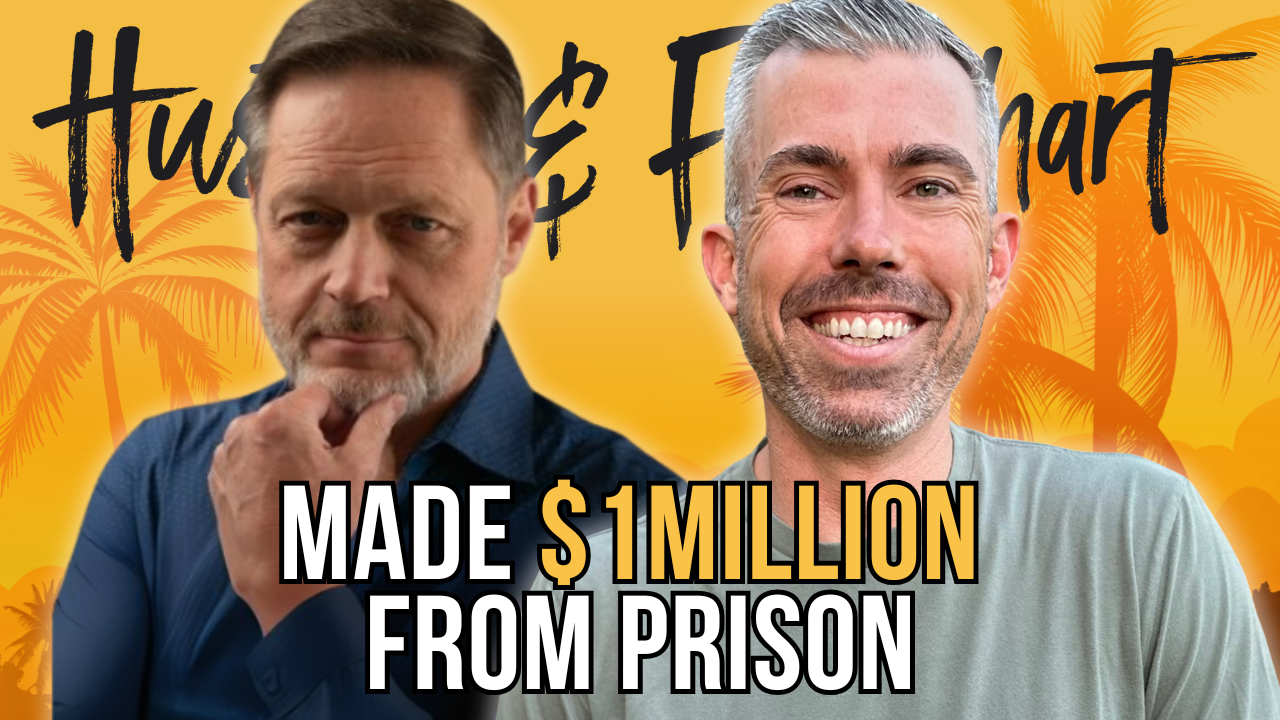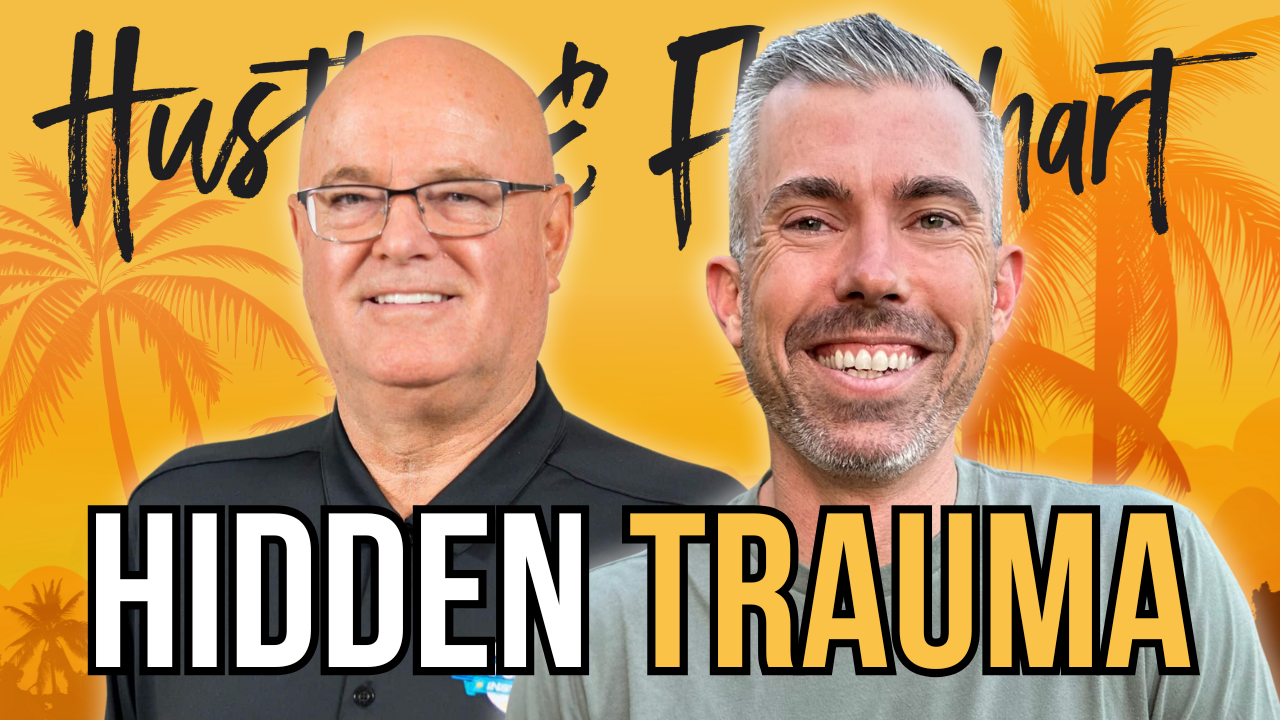A cryptocurrency is a digital asset designed to work as a medium of exchange using cryptography to secure the transactions, to control the creation of additional units, and to verify the transfer of assets. Cryptocurrencies make it easier to transfer funds between two parties in a transaction; these transfers are facilitated through the use of public and private keys for security purposes. These fund transfers are done with minimal processing fees, allowing users to avoid the steep fees charged by most banks and financial institutions for wire transfers. There are so many ways to invest in cryptos but today we're discussing how to earn free cryptocurrency.
On today’s show, Matt and Joe will be riding solo or is it in tandem? There is no guest on this episode. They will discuss Matt’s experiments with blockchain, trading, and how to earn some cryptocurrency using the blogging platform steemit.
“Your content can be postings or commenting along with all the interaction modes and get paid for it.”
Table of Contents
ToggleSome topics that were discussed include:
- What is SteemIt?
- How to earn free cryptocurrency
- What we learned from Michael Taggart about earning free coins
- Differences between SteemIt and Reddit
- Some rules of thumb for posting in comments
- What are Steem dollars and Steem Power and how to earn them
- Converting Steem Dollars
- 3 Things you can do with Steem Dollars
- Being a powerful Curator from day one
- Powering up and powering down
- 3 ways to get approved on SteemIt
- Matt and Joe’s experience in signing up
- How to create a completely anonymous SteemIt account
- The first step once you have a SteemIt account
- How to start building a following
- How to introduce yourself in an effective way
- Matt’s testing process
- How to start earning using SteemIt
- And much more
[adrotate group=”3″]
References & links mentioned:
- Matt's SteemIt Posts
- A SteemIt game plan anyone can follow
- AnonSteem
- What is the blockchain and cryptocurrencies?
- Simple ways anyone can get involved in crpyto
- How To Make Money With Gaming NFTs
Subscribe & Review The Hustle & Flowchart Podcast
Thanks for tuning in to this week’s episode of the Hustle & Flow Chart Podcast! If the information shared in these weekly conversations and interviews have helped you in your business journey, please head over to iTunes, subscribe to the show, and leave us an honest review. Your reviews and feedback will not only help us continue to deliver great, helpful content, but it will also help us reach even more amazing entrepreneurs just like you!


Podcast Transcription – What Is SteemIt?
Joe: All right. This episode is going to be a duet episode. That means just Matt and I. We don't have a guest on the line with us or in the room. But … other than the voices in my head.
Matt: Mm-hmm (affirmative).
Joe: No. This one we're going to talk about this new thing that Matt has been experimenting with on the side. It's leveraging some previous stuff we learned from Michael Taggart.
Matt: Mr. Taggert.
Joe: Mr. Taggert. Mr. X. One the two block chain, cryptocurrency, Bitcoin podcasts that we have. If you don't know what all that stuff is, those words I just said, go listen to those episodes. Probably the first one is best because it gives you like a good overview.
Matt: Yeah. The first episode is like the overview of blockchain, cryptocurrency, Bitcoin. Why you should care. The second episode we did is all about trading, how to put it into wallets, how to earn it for free. Stuff like that. Today what we're actually going to talk about is one of the things that Michael introduced us to, about how to earn it for free. Which is a blogging platform that uses the blockchain called Steemit. If you don't know what the blockchain is, don't worry it's not super relevant to this conversation. (laughs)
Joe: It's technology that is making all this stuff work. Basically the whole idea is it's taking over … it's improving up on the internet in ways of processes, and management, and technology. All this stuff that we are already using online, everyday. How that's already taken over the world. Blockchain is starting to do that. It's still extremely early. But there's a lot of technology's being used that you might not even realize. What we're going to talk about with Matt. I'm going to kind of be the interviewer. But he'll probably tell me stuff that I can't even questions because I don't eve know (laughs) as much as Matt.
Matt: We'll get into as much as I can. If you don't know about the blockchain or Bitcoin or anything, I will definitely link up the last two episodes with Michael in the show notes. Make sure you listen to those. Tega, our editor, make sure you link up those two little episodes with Michael Taggart in there.
Joe: Tega.
Matt: Check those out. But they're not going to be super relevant to what we're talking about. We're going to talk about one of the ways to leverage the blockchain. But it's not like you have to totally understand what's going on to make it work for you.
Joe: Exact-o-mundo! Let's just get into this. Basically we're going to talk about how Matt has been leveraging this platform called Steemit. That's S-T-E-E-M-I-T. All right. Matt, what the hell is Steemit?
Matt: Okay. (laughing). Now before we really dive in, I do want to make a sort of disclaimer. That I've only been on Steemit for about a month now, as of doing this. But I've already started to see some great results. I've talked to a ton of people in the Steemit community, learned a lot from them, asked questions. My one month of experimenting is probably very, very intense compared to what most people have experimented with Steemit.
Joe: The way that Matt experiments is definitely way deeper than most people I have ever known (laughs). All right. Explain what is Steemit.
Matt: Okay. Steemit is a blogging platform that is sort of a cross between Reddit and Medium. It's similar to Medium in the sense that people go on there and they write blog posts. It's on somebody else's platform. You are creating content on that platform that anybody can read, leave comments on, and find. Also Steemit has great SEO rankings. It's a well-
Joe: Really?
Matt: Yeah.
Joe: I didn't know that.
Matt: What's the word when you put something on a website and it ranks instantly just because it's-
Joe: It's like high value … what the hell is it called?
Matt: Yeah. It's a high value site in Google's eyes. When you post content on there it actually ranks pretty quickly, similar to like Medium. It's similar to Reddit in the sense that people up vote and down vote the content. When you write a blog post, or if you write a comment on a blog post, you can up vote the blog post or up vote the comment; or down vote the blog post, down vote the comment. The stuff that gets the most up votes sort of rises to the top and becomes the most visible in the trending section on this site. The stuff that gets down voted a lot kind of disappears into obscurity on the site. It's like Medium and Reddit in that sense that there's the voting mechanism and that there's a third party platform that you are posting content on.
Then the additional element that makes it different from Medium and from Reddit is that you actually earn money when you get your stuff up voted and people enjoy your content. It works with comments too. If you make really, really high value comments and people up vote your comments, you can actually earn money for having really good comments. The rule of thumb is you make really, really high quality content. Make really, really high quality comments on people's content. You're going to actually earn some good income from it. There's literally people on there, if you browse the site, that have made $10,000 off a single blog post because it was so high value, so well shared, so well received by people.
Joe: Basically you get rewarded for creating bad ass content.
Matt: Exactly.
Joe: Reward in the sense of literally money. This is money … How does that work?
Matt: Okay. They don't actually technically reward you in like US Dollars. They reward you in what's called Steem Dollars and Steem Power. Now it gets kind of confusing here because there's multiple sort of Steem currencies, I guess, you can call them. There's the Steem currency, which is just Steem. That is a cryptocurrency coin. Just like a Bitcoin, like Ethereum, like any other coin that's out there that you can think of. It trades on the open market. You can buy the coins. The coins can go up or down in value. You can sell the coins.
Joe: That's called Steem.
Matt: That's just the Steem coin. You've got your Steem Power. What Steem Power is, is the voting power you have on Steem. Okay. If you have a lot of Steem Power on Steem, and you up vote somebody's post, it's actually more valuable than somebody with less Steem Power. The more Steem Power you build up, the higher the voting power you have in the platform. Both on comments and on blog posts.
Joe: How do you get more Steem Power then?
Matt: There's a third element-
Joe: Oh. Sorry. Go-
Matt: There's the Steem Dollar. You got Steem, Steem Power, Steem Dollar. The Steem Dollar is what you actually earn by curating or creating content. All right. When you create a new blog post and somebody up votes it. If somebody with a lot of Steem Power, meaning they have high visibility on the platform … if somebody with a lot of Steem Power up votes it, you actually make money in Steem Dollars. Okay. Are you following me so far-
Joe: I get it now.
Matt: With the three-
Joe: So you get paid out. Basically you can trade Steem on the market like Bitcoin or something like that. That's the currency.
Matt: Correct.
Joe: You have the Steem Power, which is your clout basically.
Matt: Exactly. Yeah.
Joe: Then you have Steem Dollars, which is what you get paid in, but that stays within the Steem ecosystem. It's not like that is actual … it is currency, but only within the platform. Not like outside-
Matt: Yes. But you can cash out your Steem Dollars if you want.
Joe: Well, I didn't get there. Yeah.
Matt: Yeah. A Steem Dollar can be cashed out at a one to one ratio or fairly close.
Joe: Because they try to keep the currency, right?
Matt: They try to keep their currency value at around a dollar per coin.
Joe: You told me that trading … if you were to invest in just Steem-
Matt: It's not the greatest investment to invest in Steem because they try to fix the currency value at around one dollar.
Joe: Got it.
Matt: The better use of your Steem is to convert it into Steem Power. Get more voting power on the site. Then you can actually earn more because you can up vote your own posts.
Joe: That or if you have enough, and you're making enough money, then transfer that out to Bitcoin or something like that. Where you can actually … So you're earning that stuff without buying ti.
Matt: You're sort of getting ahead of me. We're talking about the Steem Dollar a minute ago. So the Steem Dollar you actually earn when you create good content that gets up voted, or good comments that gets up voted. That's the Steem Dollar. Now the Steem Dollar you can cash out whenever you want. Let's say I made a post. It earned $20 Steem Dollars. I can cash out that $20 Steem Dollars into US Dollars. Pretty much whenever I want. I can just go in there and say, “Cool. That $20 I've made. I want it. I want to put it in my pocket.”
Joe: Right through the site? You can just do it right there?
Matt: It uses a site called Block Trade. If you click on it, it will send you to Block Trades where you can convert it out into Steem Dollars. That's one option you can do with those Steem Dollars. Just for my example purposes. Let's say I made a blog post. The blog post earned me $20 because so many people up voted it. I can do two things with those Steem Dollars. I can cash it out, but it in my pocket. Actually, I can do three things. I can cash them out, put it in my pocket. I can convert those Steem Dollars into Steem Power, which gives me more voting power on the site. I can take those Steem Dollars and say, “I'll have an additional 20 steem Power, instead of $20 Steem Dollars.” Now my votes go a little bit farther when I got to curate or up vote content.
Joe: Right. Right.
Matt: All right. The third thing you can do is you can actually put it into what they call like a “Steem Dollar Savings Accounts” which is something that's built into the site. You can actually … I've actually seen very few people do this because it makes more sense to move it to Steem Power than Steem Savings. But you can move it to Steem Savings and it actually earns a little bit of interest by just leaving it in there. But almost nobody does that because you have much more leverage by converting it to Steem Power, and getting better voting power on the site.
Joe: Got it. (laughing) Now to where I was kind of leading us, is how people can actually … because there's a lot of folks out there. We were like this for a long time, is like, “Okay. I'm not comfortable maybe investing my own dollars. Personal money into cryptocurrencies.” This is now a way you can literally earn cryptocurrency, at least some kind of budget that you can use, that you can now apply to cryptos investing.
Matt: Correct. Yeah. Let's say I make a blog post. The blog post earns me $20. I can take that $20 Steem Dollars, go to Block Trades which they're sort of tied together with Steem. I don't know if it's the same ownership or what. I don't think so. I think they just leverage Block Trades to make the trades. But you can take your $20 Steem Dollars, go to Block Trades, convert your $20 Steem Dollars into $20 dollars worth of Bitcoin. Now you have Bitcoin in your portfolio, but you've never spent a cent on it. All you did was create content to earn that Bitcoin.
Joe: Got it. Okay.
Matt: Coming back to the currencies because this is the most confusing part. It took me two months to wrap my head around. Between the Steem Coin, the Steem Power the Steem Dollar, the savings. There's other things. Powering you, powering down. We can get into that in a minute too. But your Steem Dollars can be converted into cryptocurrencies on Block Chain and then cashed out however you want. Or your Steem Dollars could be powered up using into Steem Power. Also, if you want to just jump in there and have voting power from day one, you can actually buy Steem, just the Steem Coin. You can take that Steem Coin and convert that into Steem Power as well.
Joe: Got it. You don't have to naturally, organically do this. You can actually kind of jump up a level.
Matt: You can actually sort of jump up, and become sort of a powerful curator on day one if you want to invest some money. If I wanted to take $1,000 and buy $1,000 worth of Steem. I can take that Steem, transfer it to Steem Power. Now I have $1,000 worth of Steem Power which is going to get me a lot of voting power when I vote on people.
Joe: I follow you. All right. I don't want to go too crazy deep in all of … I think that's a good … like that's a better understanding than I ever had from reading stuff about it and all that. Is there anything necessary more to know about the whole money side before we get into content?
Matt: Yes.
Joe: Okay.
Matt: The last sort of thing I want to talk about is this sort of powering up, powering down. Powering up, they call it Powering Up on the Steem platform if you want to convert your Steem Dollars which you've earned on content into Steem Power. They call that Powering Up. It takes I think three days. You can say, “Let's say I've got $20 in Steem Dollars. I can click the Power Up button. It'll convert it into Steem Power.” Now Powering Down works a little bit differently. You can actually take your Steem Power and convert that into money as well.
Joe: Oh so you can cash out if you want.
Matt: You can actually cash out your Steem Power if you want in a process called Powering Down. But they do it over, I think, it's 13 weeks. Over 13 weeks, each week they're going to give you your currency in increments over several weeks. In a process they call Powering Down. When you Power Down it converts it into Steem Dollar again. Then you can take that Steem Dollar, convert it into whatever cryptocurrency you want and cash out. Powering Down your Steem Power, you can actually get money out of your Steem Power if you want. You obviously lose your curation power-
Joe: Clout. Yeah.
Matt: Yeah. You lose some of your clout by Powering Down. But you can actually cash that out if you want to. The reason they do it over 13 weeks is they don't want people sort of gaming the system, and gaming price fluctuations of the currency.
Joe: That's the thing. They want to keep it pretty even … the dollar.
Matt: They want to keep it stable. If somebody had 100,000 Steem Power. They don't want you to go and cash out all 100,000 of that in one day and just get it out of there. They want it to slowly Power Down.
Joe: That makes sense.
Matt: That's kind of the last sort of thing. There's other intricacies. But if we go too deep, I'm sure I've already confused people enough-
Joe: I want to get into now … So now everyone should understand that you can do content, postings, commenting, all the interaction stuff and get paid for it. Really that's the key here. Obviously there's a lot of things you can do with that stuff you get paid. Now let's talk about content. What are like some really simple strategies that you found that people can start with and actually start using this thing? And how do they get started, I guess, we can-
Matt: Let's start with how they get started before the content. Steemit actually still, to this day, has an approval process. I don't know how it works. I've got to be honest. I have no clue how it works.
Joe: Well, yeah, because we both go approved fairly quickly. Some people we know have waited for weeks. Both of us were like two days. There weren't any questions you had to answer-
Matt: For me I think it was 24 hours. It was either 12 or 24 hours. I created the account on Steemit. Then the next morning I woke up and I had an email that said, “you've been approved on Steemit.”
Joe: I guess mine was around … well, either way thought, we didn't answer any questions. That's the thing. It's literally just enter your email address, I thought.
Matt: Yeah. They ask for your username, and email, and phone number. They do validate your phone number.
Joe: Got it.
Matt: They ask for those three things. Once they do that, then … I don't know how long it takes to get approved. You and I were both approved within 24 hours. I don't remember the exact time, but it was within 24 hours. I do know three people now who have said they requested to be on Steem and it's been over a week now and they haven't got approved.
Joe: I think they asked around the same time we did.
Matt: Yeah. I've read things online that says that it's a manual process. People are going in there and manually approving your Steem account. The way they're doing it is they're looking at Twitter, Facebook. They're probably Googling you and going, “Okay. Does this person have some clout on the internet? Okay. They do. Let's approval the people with the most clout first. The people that we can't find any record of on the internet”-
Joe: Well, yeah, they want to go their platform. That's the whole thing.
Matt: Yeah. They're trying to get people on there that they think are going to be big and help raise more awareness for the platform. But there is ways around that that I've found. But it costs money. There's a place called … I'll have to actually look up the URL. I'll make sure the URL is in the show notes. It's called like AnonSteem, A-N-O-N Steem or SteemAnon. Some variation of that. What that is, is you can actually go to this site. I think you can pay in either Bitcoin, Litecoin or Steem itself. The cheapest way to do it is to pay in Steem. You pay in Steem. It's $10 Steem Bucks. Since Steem is fixed it costs you $10 basically, right? You can pay in Steem. The thing about paying in Steem is your accounts not anonymous. Because there's going to be records on your Steem account of like where the money transferred in, where it transferred out. That sort of thing. It's not anonymous.
If you actually, literally want to create an anonymous account, you can either use Bitcoin or Litecoin on that site. Purchase a Steem account. It'll be anonymous. But because Litecoin and Bitcoin, the prices fluctuate so much, the price that it costs you to get in is going to be different every day. It runs roughly $15 to $20 bucks to create an account.
Joe: Got you. Let's-
Matt: If you're not getting approved that's a way. Go to that site. You can basically pay to get an approval. You can either be anonymous or you can be not anonymous, but that's where you would do it.
Joe: They'll take it in. Okay. Cool. Okay. You have to apply, you get approved, basically you kind of get started from there. There's instructions and all that stuff.
Matt: If you do pay to get in there, the money you pay, actually converts into Steem Power.
Joe: Nice. Okay. It's like you reinvest it.
Matt: If you go on that site, that Anon site, you create a Steem account. You pay $10 bucks to get in there. I don't know if the full $10 bucks, but a big chunk of that $10 bucks actually shows up as Steem Power once you get the account.
Joe: Cool. Okay. Let's talk about content. How would you suggest someone getting started fresh? How should their strategy look like? What should they do?
Matt: Okay. The very first step I would take is get into the platform and just start reading other people's blog posts and comment on other blog posts. Literally don't even start by writing your first post. Don't even worry about that. Just get into the platform, look around, read some blog posts that really, really interest you, up vote the ones you like, and leave comments. But make valuable, high quality comments. Shit like “great post” or “that was great. Thanks for sharing.” Does not fly on Steemit. All right? You've got to in there and put something that adds to the conversation. Usually if you see comments that I write on Steemit, I almost write an additional blog post in my comments.
Joe: Mm-hmm (affirmative). Yeah you do.
Matt: A paragraph or two of like really good content in my comments because I want to get my comments up voted. Because I can earn off my comments just as well as I can earn off my posts themselves. All right. The very first thing. Get in there, read some content. Just be a curator in the beginning. Up vote and comment on stuff. Just start by doing that. That will give you a feel for the platform. You'll probably start getting some people following you from doing that. Because posting a blog post on there, if you have no followers, you're going to get crickets. That's a good way to start building up followers. Just up vote and comment on stuff.
Joe: Got it.
Matt: That's phase one. Do that for as long as you feel comfortable. Maybe a week or two. Build up some followers. See what kind of money you earn off your comments. Then phase two is to go an write an “Introduce Yourself” post. All right. They have a section in there that says “Introduce Yourself.” When you write new posts you can add up to five tags on your posts. Okay. The very first tag that you use is the section your blog post is going to get filed under basically.
Joe: Got it. People can find you organically that way.
Matt: Yeah. They can search tags and find the post inside those tags. One of the most popular tags on there is a tag called “Introduce Yourself.”
Joe: I saw yours. You had like a little goofy sign or whatever (laughs)
Matt: Actually, if you sign up for Steem, they're going to send you a little article that says “Here's what we recommend you do on Steem.” It tells you how to write your “Introduce Yourself” post. It actually says, “Hold up a picture of yourself with the word Steemit on it, and take a picture of yourself holding that with a camera. So we know it's like you made this new picture fresh for Steem. You're not some fake person.”
Joe: Got it.
Matt: Right? Make an “Introduce Yourself” post. Follow some of the guidelines they give you on the “Introduce Yourself.” Use a lot of images on it. Be interesting. Make yourself sound like someone people would want to follow. You will get some organic new followers just from people looking at who's popping in and who's new on Steem. The “Introduce Yourself” post is big. A lot of people find they'll get discouraged. They'll put an “Introduce Yourself” post on there. They'll make like $10 bucks off their “Introduce Yourself” post in like 15 minutes. They're like “Steem is fucking amazing! I love this thing.” (laughing). Because, “Look, I just made one post. I made $10 bucks. If I make $10 post a day, I can make $100 bucks a day.” Then what happens is after your “Introduce Yourself” post, your next like five posts might make like three cents.
Joe: Yeah.
Matt: You know? (laughing)
Joe: Makes sense.
Matt: It's just because that “Introduce Yourself” section is so watched. There's so many people watching it to see who's new on Steem. Who should they follow. Who looks interesting for them. People are kind of keeping an eye on that. Your “Introduce Yourself” post is going to be your first little like win-
Joe: Because they're engaging with it. They're up voting you. They're probably commenting. They're probably not sharing so much, but at least that's how you're getting paid.
Matt: Yeah. Yeah. If you want my opinion on the easiest way to make your first dollar online.
Joe: Do that.
Matt: Sign up for Steem, write an “Introduce Yourself” post. You'll probably make your first dollar online.
Joe: I should do that (laughing) because I haven't even done that much yet. I've commented and up voted some stuff. I've lurked around. But I haven't done what you've done here.
Matt: What you'll get too is you'll post a post on there about like “Here's my 10 step strategy for how to run Facebook ads.” Right? Somebody might read it and go, “that's a really good post. I want to go learn more about this person who wrote the post.” Then they're going to go find your introduce your post.
Joe: Totally.
Matt: Learn more about you and kind of backtracks. That's going to be a post that sort of is going to live there forever that people can find out more about you.
Joe: Here's an issue that I have. I know you know this issue. Not everyone does. They probably want to think it's my issue. But it is, is that Matt's the blogger of the two of us. I'm not one to sit behind a screen and just blog everyday. That's Matt. Not me. I have no problem writing. I love writing. I was just showing Matt how I had a thought last night for a friend of ours. I literally wrote out a whole business plan for him, like three pages long, at 1:00AM. I mean, I love to write and it comes out fine.
But my issue is to be consistent with content creating, and content curation. Anything content really. I have a lot of ideas, but the whole thing is … Matt, we were explaining this yesterday when you were taking your computer to the shop actually. I was like, “Man, I have an issue with not posting … like I can't post everyday. It's a mental roadblock.” But you explained I should look at content differently. Instead of thinking I have to create some mega post everyday or some well thought out thing, it literally could be like some thoughts. It could be a question. Maybe a blurb that's kind of short.
Matt: Two things on what you're saying there is when it comes to the content you can curate if you want. You can get on Steem and there's a lot of people making really good money just curating content. When I say curating content, they're up voting the stuff they like and they're commenting on the stuff they like. They're not even making their own posts. You'll see people making really, really good money doing that. The more you raise your Steem Power, the more effective just doing that becomes. You can become a curator. It's a slower process. You're probably not going to make as much money as you will be creating unique posts. I could be wrong on that. Again I'm a newbie to this.
Joe: Maybe this is my thing to test.
Matt: You can test that.
Joe: I'll be the curator of the two of us.
Matt: Yeah. I mean, I'm doing both. If I find good posts, I'm curating them. Everyday I'm trying to write something new. To the point you were just making is a handful of my posts are literally questions. I made a post the other day that said, “I'm an entrepreneur. I'm a marketer. I like affiliate marketing. I like blogging. I like content marketing. These are sort of my topics I like to discuss on. Are there people on Steemit who are interested in this topic?” Boom. That was my whole blog post. Right? I made that blog post. That thing earned me like $5 bucks. Right? It took me 15 seconds to write that comment on there. The next day I checked in, there was 12 comments on it by people going, “Oh, I love those topics. Keep them coming. Because I'm listening.”
Joe: So you got those people there. Was it because of the hashtag you used mainly?
Matt: The tags? You don't use hashtags.
Joe: Or tags.
Matt: You use these tags. There's no pound symbol that's on it. (laughing).
Joe: See I'm a newbie. (laughing)
Matt: You just use tags. But yeah, the tags are how people are going to find you.
Joe: You had followers obviously from your previous posts.
Matt: I have followers. There's a feed on there kind of similar to Twitter where you can see like anybody I follow. These are the latest blog posts from the people I follow. You can see the new posts in your feed of the people you follow. Then there are people searching tags. If I was to go and be like, “I'm really interested in learning affiliate marketing. Let me see if there's an affiliate marketing tag on Steemit.” I'll do that search, find any blog post with people who tagged it affiliate marketing.
Coming back to the original question of if I'm not good at content or I don't like doing a lot of content. You can be a curator. You can just up vote and comment. Right? When it comes to the content. You can ask question. At the end of the day Steem wants to get engagement going in their platform. They want people on their platform often. If you're asking good questions and a lot of people want to comment on, that's going to work just as well as a long pillar post piece of content.
Joe: Makes sense. Yeah.
Matt: You can curate content on their in the other sense of curating. Not the Steemit curate, but like the sense of “I have a blog over here. I'm going to take this content that I've written over here and I'm going to share it here.” Now Steemit has a very anti-plagiarism rule, they call it. They have people actively watching Steem to make sure you're not copying blog posts from other sites and just pasting it in here. But if it's your own content, and you actually put a little byline on there that say, “This was originally posted here. But I thought I'd share it here too.” They're totally cool with that.
Joe: Nice.
Matt: So you can take your other blog posts you've already written. You can imbed YouTube videos you've made. You can take podcast interviews, get them transcribed, use those. Curate in that sense as well.
Joe: That's cool. It's a way … because Matt and I, we're both big fans of curation of your content. Spreading it all over the web once you make it once. You shouldn't just live on one platform. It should go all over the web. Now you gave me a strategy yesterday and maybe quickly talk about this. Then we should probably wrap this one up or get pretty close to it here. Because this is kind of a basic overview. I think you're so new still to Steem. You know what more than most people, but you're still new. You're testing these things. You said your strategy instead of just repurposing content from say your blog to whatever to Steemit. Instead, you're posting on Steemit, making your money there maybe for a week or so. Then maybe in a month, maybe. After it stops “trending” making money. Then you repost it elsewhere.
Matt: Yeah. There's a specific window that you can earn on your content in Steemit. This is something I'm not 100% clear on like how big that window is. Because I guess it moves based on how much interaction that content is getting. But if you go and create content there, get your earnings from Steem first, and then curate it to other platforms. To me that's a better strategy then say I'm going to post it on my blog and then two weeks later post it on Steem.
Joe: Right.
Matt: You post on Steem, that's where it's unique and original first. Let it make some money for you. Then move it to your blog.
Joe: Got it. I just wanted to make that clear to people as we were talking about repurposing because I think that flow makes a lot of sense. It's like leverage the platform, man. As much as you can and then apply it-
Matt: One thing I'm going to start testing … We can wrap up right after this. But one thing I'm going to start testing is I'm going to start taking transcripts of podcasts, putting those on Steem. See how well those get received. Also, if that doesn't do well. I'm just going to start just taking like my big takeaways from a podcast. Here's 10 things to know after listening to this podcast. Boom, boom, boom, boom, boom. Here's the link to the full episode if you want to listen.
Joe: Nice.
Matt: I'm going to try some of those. See how it goes. Again, I'm still testing. One thing I tested that didn't work was just taking a video on YouTube that I made and embedding it on Steem. Nothing.
Joe: Oh well.
Matt: That hasn't worked, but you know, it's all going to be a testing process. Maybe that'll work in the future once I've built up more clout, more Steem Power. We'll see.
Joe: It's not like it's hurting you to test it. Cool. I would say that's a wrap on the overview of Steemit. Some creative ways to use block chain and cryptocurrency technology to literally kind of do what you're probably already doing now. Is creating content of some sort, but using this platform now to actually earn money.
Matt: Yeah. Earn cryptocurrency.
Joe: Yeah. If you choose to keep it in the platform and see where this thing goes because it's still very early. Or start investing in things like Bitcoin and all these other alt coins out there.
Matt: Yeah.
Joe: Cool.
Matt: Here's one last quick little flow that I'll briefly, briefly say. Because I know we've got like two minutes here. Basically, go on Steemit. Start coming, up voting stuff. Then create your “Introduce Yourself” post. Once you've created your “Introduce Yourself” post, continue to interact. Any money you make off new blog posts or curation, roll it into Steem Power so you get more clout. Continue to up vote. Continue to comment. You're going to make more and more money with each consecutive post as you grow your Steem Power. Then at some point, if you want, take that Steem Power, cash it out into a cryptocurrency. Put it into Bitcoin, Ethereum, whatever sort of Bitcoin is hot at the moment. Let that ride. Then repeat the process. You stand to make shit tons if you're like in that cryptocurrency world.
Joe: I'm just saying my crypto strategy, this is what I've been kind of doing, just trickle cash in percentage wise. Don't really worry about the price so much. Just always kind of add a little bit there. Inherently, theoretically, it'll go up for Bitcoin. Obviously it's not always going (laughs) to be the easiest of rides.but that's one way. All right. Cool. Good episode. Go try it out. Go to Steemit.com and check out the show notes for Matt's links. He'll probably post some links to his Steemit account and all that stuff too.
















